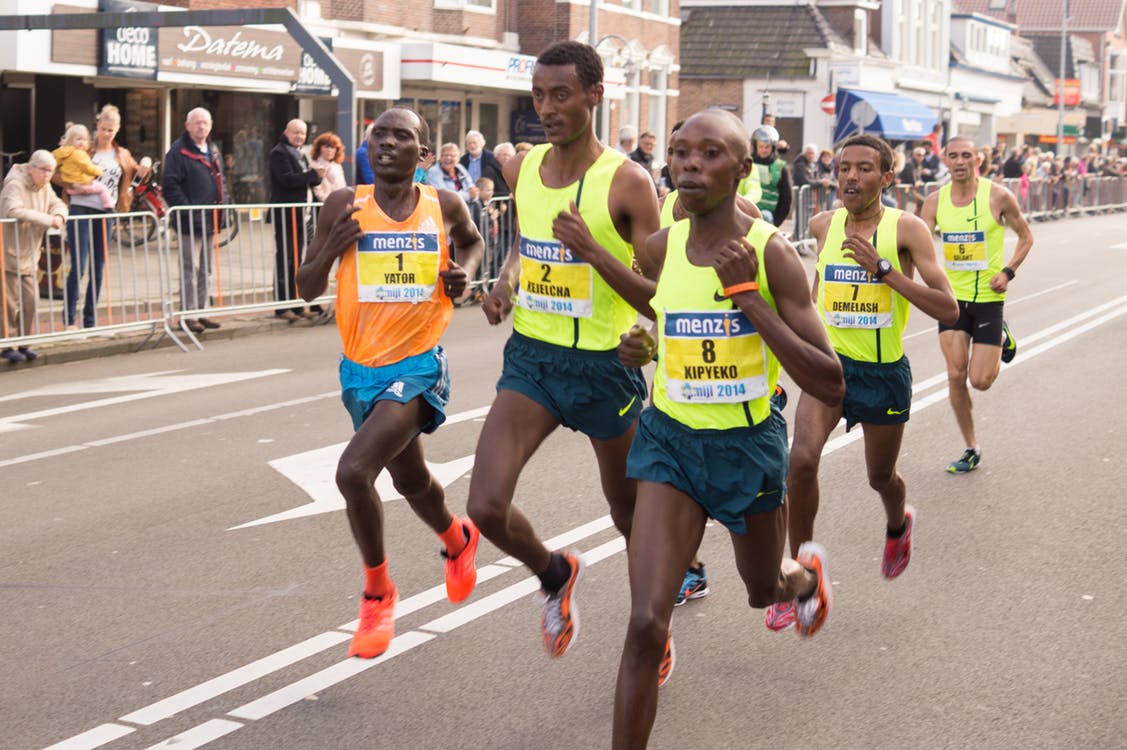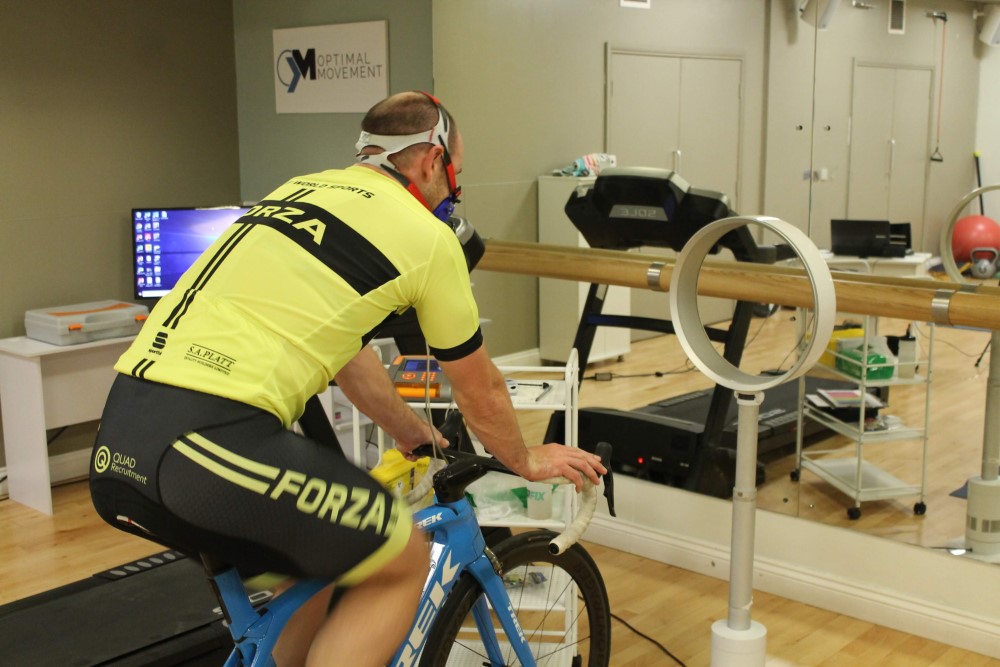This is a transcript to the “What’s My Threshold?” audio article available to Optimal Movement Members. For more information on becoming a member please click here.
You’ve probably ridden along in pack or ran within a group and heard someone say “I’m sticking below threshold today, I have a big race coming up this weekend.” But what does “below threshold” even mean? Sports scientists and physiologists who have spent years studying thresholds can’t even agree amongst themselves so is it a term thrown about too regularly that causes more harm than good?
“Threshold” is a term that’s used A LOT within the world of endurance sports.
Can Knowing Your Thresholds Improve Performance?
In this article we will attempt to simplify the term, focusing on how (if at all) “thresholds” can be applied to training with the end goal of improving race positions, times and speed, not simply vocabulary. We will also discuss whether the terminology used is fundamentally flawed and whether it is even beneficial to any endurance athlete.
In the context of endurance sports, we should start by looking at what we believe are the two most popular thresholds used within racing and training: Aerobic (using oxygen) Threshold and Anaerobic (not using oxygen) Threshold.
Before proceeding any further we need to acknowledge that for EVERY level of intensity our body is producing lactate as a result of Anaerobic metabolism AND also consuming energy whilst utilising oxygen during Aerobic metabolism, even when at rest. These processes are going on all of the time, the thresholds simply mark a “shift” in the production of lactate and the utilisation of oxygen, albeit minimal.
Getting to These Thresholds
From a practical standpoint, we reach both of these physiological thresholds as we increase intensity (measured in Power in Watts or Speed in kmph, for example). The Aerobic Threshold could be defined as a threshold occurring at a relatively low intensity of exercise. According to this paper (https://www.ncbi.nlm.nih.gov/pubmed/28745473) this tends to happen at around 46% of your VO2Max. Technically speaking, VO2Max is the maximum amount of oxygen you can utilise per kilogram of bodyweight per minute – think 5km race pace if you’re a runner, 20minute Functional Threshold Test if you’re a cyclist. No two studies will ever put the Aerobic threshold at the same percentage though, it varies widely between individuals.

You “should” be able to sustain an intensity of exercise below your Aerobic Threshold, using predominantly Oxygen and Fat for fuel, for many hours, although other factors other than your bioenergetics (biological energy) may be limiting factors in doing so – conditioning, heat, stress, motivation etc. This definition of Aerobic Threshold means that it is an especially important threshold to acknowledge when training for marathons or long distance triathlons.
When you surpass your Aerobic Threshold you will start to fatigue at a greater rate as your body starts to utilise energy systems that are less sustainable for long duration exercise in a higher proportion. These energy systems also produce fatiguing bi-products and therefore a bit more discomfort.

Before moving on, we must note that the Aerobic Threshold “roughly” corresponds to other thresholds you may have heard of such as the:
“First Ventilatory Threshold” (where conversation becomes a bit more difficult)
“FatMax” (where fat metabolism is at its highest).
They “roughly” correspond, they are rarely equal as they measure different physiological markers. Therefore the terms shouldn’t be used interchangeably, but often are.
The Anaerobic Threshold
As we dial up the intensity we head away from the Aerobic Threshold and move towards the Anaerobic Threshold. This is where things get a little bit more “ouchy“. The majority of energy production here occurs without the use of oxygen (oxygen and fat simply can’t provide the energy fast enough) and we have to make use of our carbohydrate stores to a greater extent.
The Anaerobic Threshold also “roughly” corresponds to other definitions of thresholds such as the:
“Second Ventilatory Threshold“
“Onset of Blood Lactate Accumulation”
“Maximum Lactate Steady State”
If you’re a cyclist or triathlete then it’s also similar to your “Functional Threshold Power”. They measure slightly different markers.
Too many terms don’t you agree?
Training the Aerobic Threshold
You really don’t need to worry about definitions and terminologies regarding energy systems. You probably didn’t get into your event because you were extremely passionate about bioenergetics or neuromuscular recruitment!
Using “thresholds” is confusing, and debates over what definitions are appropriate and where these points lie, within the field of exercise physiology, are unlikely to cease any time soon . That said, there are important aspects to consider when looking at the energy system approach to setting training and racing intensities but it’s important not to ignore the multitude of other factors that can also have a bearing.
Focusing predominantly on the bioenergetics; if you’re an endurance athlete then the majority of your training should be done at or below the Aerobic Threshold, where fat and oxygen are used to a great extent for fuel. It is possible to make endurance gains very quickly through higher intensity exercise (like we mentioned previously, you will be using oxygen through all intensities) but your level of performance may plateau after a period, possibly due to limiting factors such as nutrient depletion, chronic fatigue or psychological stress. You may end up less motivated to train and that will inevitably have a negative effect on your performance.
There are no shortcuts to long term endurance improvements so you should learn to embrace the low level intensity work, although the proportion of low and high intensity will vary from individual to individual based on training background, injury history and genetics for example.
Training the Anaerobic Threshold
Again, looking at training from a bioenergetic viewpoint, at some point during a marathon or triathlon you will be required to work that little bit harder – maybe you want to stick with a rival up a steep hill or pick up the pace for that first mile coming out of transition. You may also race shorter distances that stress anaerobic metabolism that little bit more than aerobic metabolism.
Ultimately, it all comes down to the “specificity of training”
If you are competing in an event at or above the anaerobic threshold (or any other threshold for that matter) then you certainly need to train at this intensity to improve your body’s efficiency at this level. But bear in mind, even the world’s best 800metre runners will spend the majority of their training time below the anaerobic threshold and I would argue that this event is the most “ouchy” event of them all (I am a bit biased though).
Like we mentioned previously, the percentage of work done at high and low intensities will vary between individuals so some people may benefit more from “ouchy” workouts compared to others.
Conclusion
The over-emphasising of thresholds tends to go hand in hand with the under-emphasising of the multitude of other factors that are crucially important in endurance training and performance.
Training done based on thresholds, although certainly beneficial, should be done with caution. Initially make sure you and/or your coach understand the terminology you are using. Secondly, understand why this terminology is important to you. Lastly, learn how this can be implemented into the structure of an effective training plan. It’s also crucially important to know that your thresholds will change over time both at an acute and chronic level.
Focus on your own performance markers and train in accordance with these. It may be beneficial for you to get your blood lactate measured or attempt to figure out a range in which you burn mainly fat for fuel. Just make sure that these practices are done in order to supplement your training and racing without causing confusion and distraction.
Ultimately there are many factors that go into constructing an effective training plan, and being overly-obsessed by one will tend to leave you ignoring the others.
Thanks for reading.
Oli and the Optimal Movement Team
Interested in finding out where some of your thresholds lie? Optimal Movement have a range of tests able to provide you with the metrics you require for optimal training. Please get in touch for more information.
